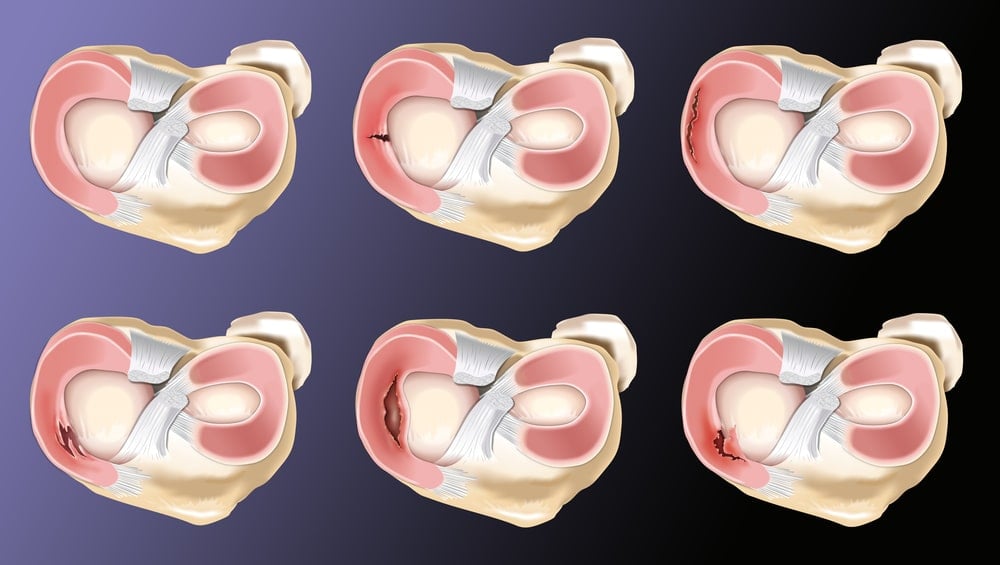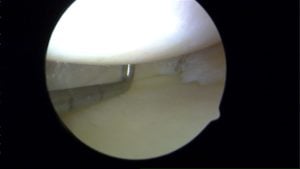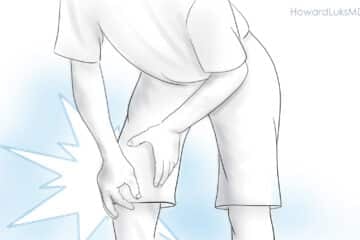Meniscus tears are very prevalent. Not all meniscus tears are similar. There are different locations for the tear. There are different patterns of meniscus tears. Your age might help predict the type of tear that might be present in your knee. Certain meniscus tears will calm down, stop hurting and do very well without surgery. Other types of meniscus tears are able to be repaired (sutured) and thus will do better in the long run with surgery. This post will review the different types of meniscus tears that exist and the options for treatment based on the type of tear you have.
While our meniscus starts off as a pristine white, “c” shaped structure in our knee … Over the years, our activities and a lifetime of cumulative micro-trauma can take its toll. The end result is a meniscus tear. Not all meniscus tears are the same. They do not look the same. They were not all caused by the same trauma. And most important of all… not all meniscus tears should be treated the same. Having an understanding of the different types of meniscus tears will help you understand what treatment if any is necessary to improve your knee pain.
There are different ways to classify meniscus tears. We can classify them based on where the tear is. We can also classify them by how they occurred. Most tears actually occur without trauma or injury. Last, we can classify tears according to their “stability”. A stable meniscus tear is much less likely the require surgery than a very unstable tear. Let’s run through these various classifications.
Types of meniscus tears — Trauma or no trauma?
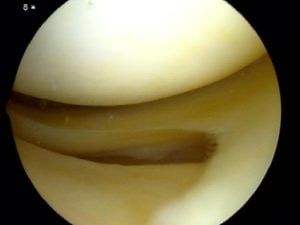
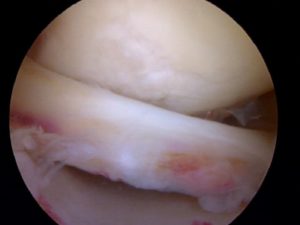
Surprisingly, the majority of meniscus tears are not associated with a sports injury or trauma. The majority of tears are degenerative or “complex” and indicate that the meniscus simply wore out over time. Meniscus tears come in many different shapes and sizes. The various types of meniscus tears you will help determine whether or not you may need surgery. The type of meniscus tears will also determine whether or not the torn piece can be stitched or repaired, or whether the torn piece will simply need to be removed. The type of meniscus tear you have will also determine whether or not you will likely have persistent pain on an ongoing basis or whether or not you can expect to feel better after a period of time. A recent paper (2019) demonstrated that surgery for a degenerative tear (partial meniscectomy) was associated with a 4-10 times higher risk for requiring a knee replacement.
Acute or traumatic meniscus tears occur as a result of an injury. These tend to occur in younger patients and children. A bucket handle meniscus tear or flap tear is a common type of traumatic meniscus tear. These tears are often repairable. That means that during the surgery, we will put the tear back into its normal position and stitch or suture it into place. Taking the torn piece out should not be misconstrued as a “repair”.
On the other hand, degenerative meniscus tears which occur as a result of wear and tear are usually not associated with trauma. Traumatic meniscus tears come in all sorts of shapes and sizes. There are radial tears, which are short tears that extend from the inner margin of the meniscus and head towards the periphery or outer part of the meniscus. There is a picture above of a radial tear. There are also horizontal cleavage tears. These are very common and literally cleave a big portion of the meniscus in half, so there are nearly two “c” shaped discs sitting on top of one another. Many horizontal cleavage tears can be treated without surgery. In the past, we did not believe that a horizontal tear would heal if we tried to repair it. Recent changes in our technique have shown that these horizontal cleavage tears might heal very well if they are repaired. It is often best to avoid removal of any meniscus if possible.
The largest of all meniscus tears is a bucket handle tear. Think of a bucket handle. You can flip it from one side of the bucket to the other. The same thing occurs inside the knee. The entire meniscus tears and the entire c shaped disc flips over and sits in front of the knee. The picture at the top of this post shows a bucket handle tear where the entire meniscus is sitting in front of the femur.
Types of meniscus tears: Unstable versus stable
Similar to how the type of meniscus tear can determine whether or not your tear is repairable — The various types of meniscus tears we have might predict how much the meniscus tear will bother you. In general, large unstable tears (root tears, radial tears, flap tears, and bucket handle tears) tend to remain bothersome, whereas degenerative tears typically do not produce significant ongoing discomfort.
When you look at a degenerative tear, the edges are simply frayed. The tissue has been worn out from years and years of use. It’s like the front of a pair of blue jeans that you’ve worn for decades and the material just simply wore out. Complex degenerative tears usually do not create loose unstable pieces that require surgery. Most people with degenerative complex tears will notice a significant improvement in their pain within a few weeks to months.
Acute, traumatic unstable tears
These are far less common than degenerative tears and tend to occur after sports injuries or trauma. The size, shape, and type of meniscus tear will determine whether or not the meniscus tear is “stable” or “unstable”. That can guide us to determine whether or not your pain will improve or might persist. For example, if a loose flap of the meniscus is created by an injury, that flap is moving around within the knee and sometimes gives you the feeling that the knee is locked or catching. That means that you might have ongoing pain and mechanical symptoms with various activities. Many people will not tolerate a large meniscus flap tear well and those patients with meniscus flap tears (or unstable meniscus tears) will usually (not always) go on to request an arthroscopy or a scope to try to either repair or remove that torn piece.
Root tears are becoming a more common tear. Either they are more common, or we just learned how to recognize them. This post goes into far more detail about these unique tears. Root tears may not be caused by trauma, sometimes you simply knelt down to pick something up and felt a pop. However, these tears create a very unstable meniscus and increase your risk of developing arthritis. Root repairs seem to decrease the risk of developing osteoarthritis and can be considered in some people with severe pain and instability.
Most people with degenerative meniscus tears may have one or two exacerbations or periods during the year where their knee hurts — but, by and large, they get around just fine and lead very active lifestyles with these degenerative tears and do not require surgery ( arthroscopy ) for treatment of those tears. In the end, it is often best if you can avoid surgery. As mentioned previously, surgery for removal of a torn piece of the meniscus increases the chance that you will need a knee replacement considerably.
You may wish to also read:
- What is a meniscus?
- Why do meniscus tears hurt?
- Can a meniscus tear heal?
- What is a bucket handle meniscus tear?
- Do all meniscus tears require surgery?
- What is the anticipated recovery after meniscus surgery?
- Lateral Knee Pain Explained
Disclaimer: Please read our disclaimer. This is not medical advice and is for informational purposes only. No doctor-patient relationship is formed.
